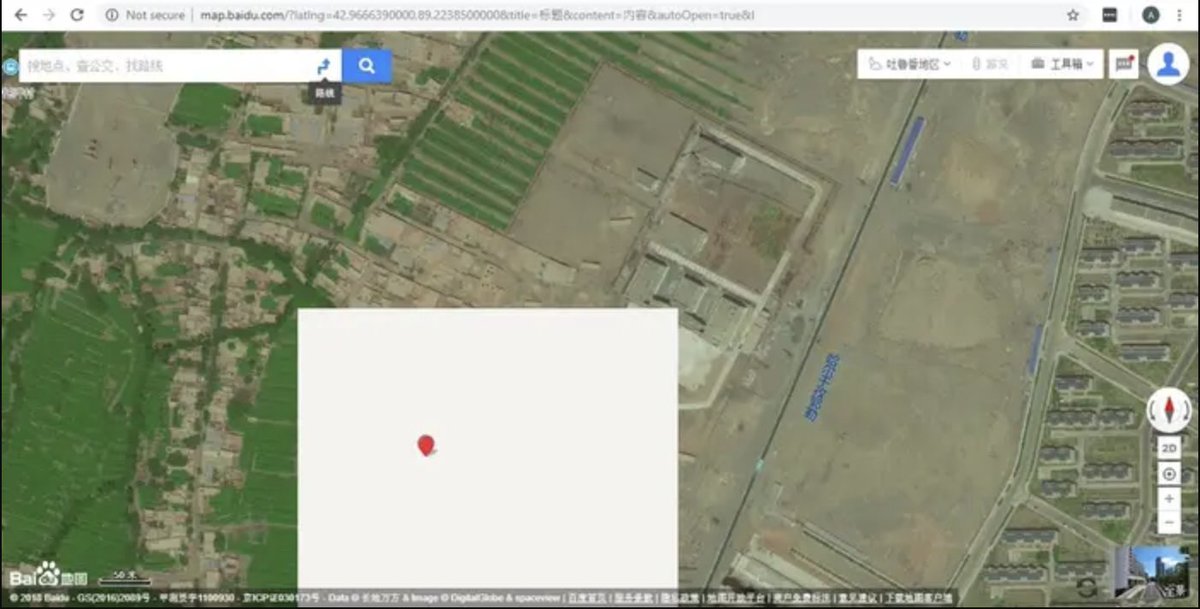NEW: China secretly built scores of massive new prison and internment camps in the past 3 years, escalating its campaign against Muslim minorities even after it publicly claimed the detainees were been set free
Some camps can hold >10,000 people. https://www.buzzfeednews.com/article/meghara/china-new-internment-camps-xinjiang-uighurs-muslims">https://www.buzzfeednews.com/article/m...
Some camps can hold >10,000 people. https://www.buzzfeednews.com/article/meghara/china-new-internment-camps-xinjiang-uighurs-muslims">https://www.buzzfeednews.com/article/m...
Our extensive analysis of satellite images found more than 260 structures built since 2017 that bear the hallmarks of fortified detention compounds — least one in nearly every county in the far-west region of Xinjiang. Before this, a few dozen camp locations were known.
We also interviewed 28 former detainees about life inside the camps. They told stories of solitary confinement, of being divided into color-coded uniforms, of "being treated like livestock" and being beaten with batons https://www.buzzfeednews.com/article/alison_killing/china-ex-prisoners-horrors-xinjiang-camps-uighurs">https://www.buzzfeednews.com/article/a...
Construction of camps and prisons is ongoing today in Xinjiang. At Dabancheng — one of the region& #39;s biggest internment facilities — our architectural analysis found that it has been expanded to hold >40,000 people without taking into account overcrowding.
How were we able to do this analysis? . @alisonkilling, Christo Buschek and I stumbled upon a strange phenomenon on China& #39;s Baidu Maps — light gray tiles appearing over known Xinjiang camp locations. By finding more gray tiles, @alisonkilling thought we could find more camps.
Read more about how this investigation was done: https://www.buzzfeednews.com/article/alison_killing/satellite-images-investigation-xinjiang-detention-camps">https://www.buzzfeednews.com/article/a...
When China first started detaining Uighurs, Kazakhs and other minorities en masse in 2016 & 2017, they were moved into repurposed public buildings, like schools and retirement homes. But with the scale of the campaign, these buildings became desperately overcrowded.
So the government started building.
By the spring of 2018, construction started on sprawling new prison and detention camps. These compounds are much higher security than the first generation of camps. They can hold thousands of people, and they are built to last.
By the spring of 2018, construction started on sprawling new prison and detention camps. These compounds are much higher security than the first generation of camps. They can hold thousands of people, and they are built to last.
The most highly fortified compounds offer little space between buildings, tiny concrete-walled yards, heavy masonry construction, & long networks of corridors with cells down either side. Their layouts are cavernous, allowing little natural light to the interior of the building.
The continuing construction of these high security camps in Xinjiang makes the government& #39;s ambitions for its campaign on ethnic minorities — who make up >half the population there — absolutely plain.
Read @alisonkilling about how we did this investigation https://twitter.com/alisonkilling/status/1298933918620672000?s=20">https://twitter.com/alisonkil...
https://twitter.com/alisonkilling/status/1298935879306805250?s=20">https://twitter.com/alisonkil...
We have a lot of acknowledgements for this work, but particular thank you to @OpenTechFund, @planetlabs which actually tasked a satellite to take pictures for us, and @Nrg8000 who gave us expertise & patient advice. And to our Kazakh/Uighur interpreters who declined to be named.

 Read on Twitter
Read on Twitter


